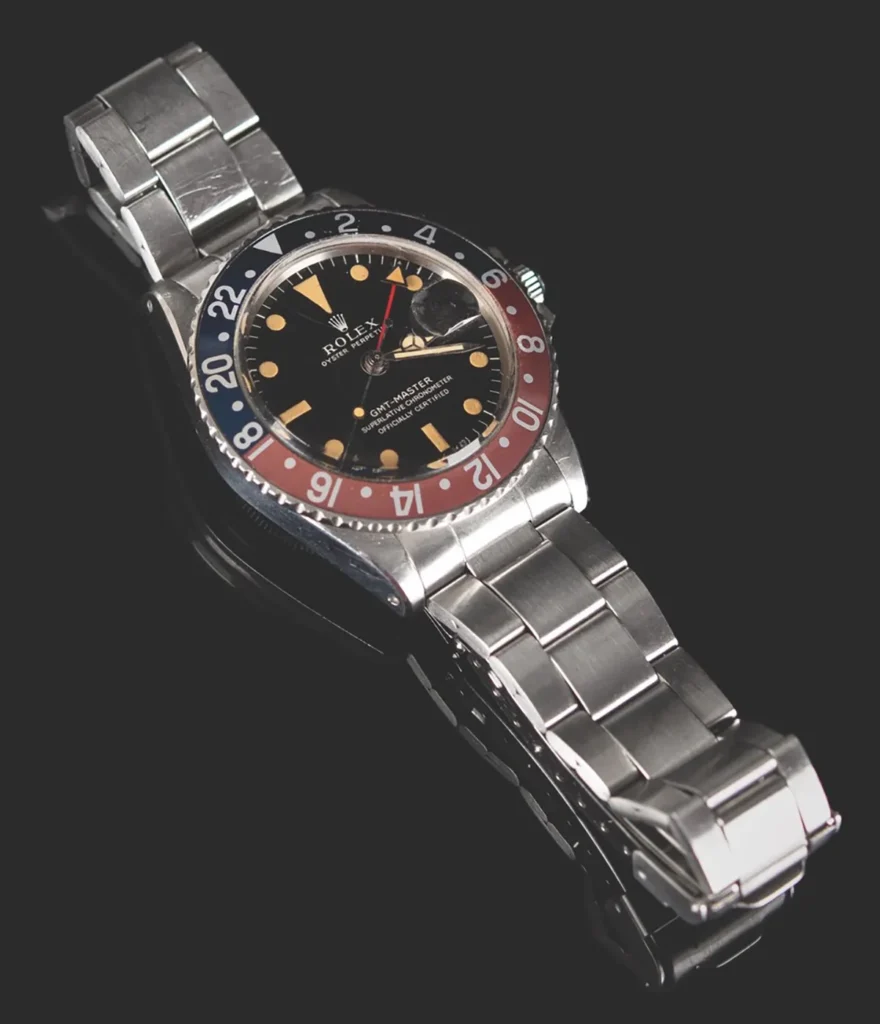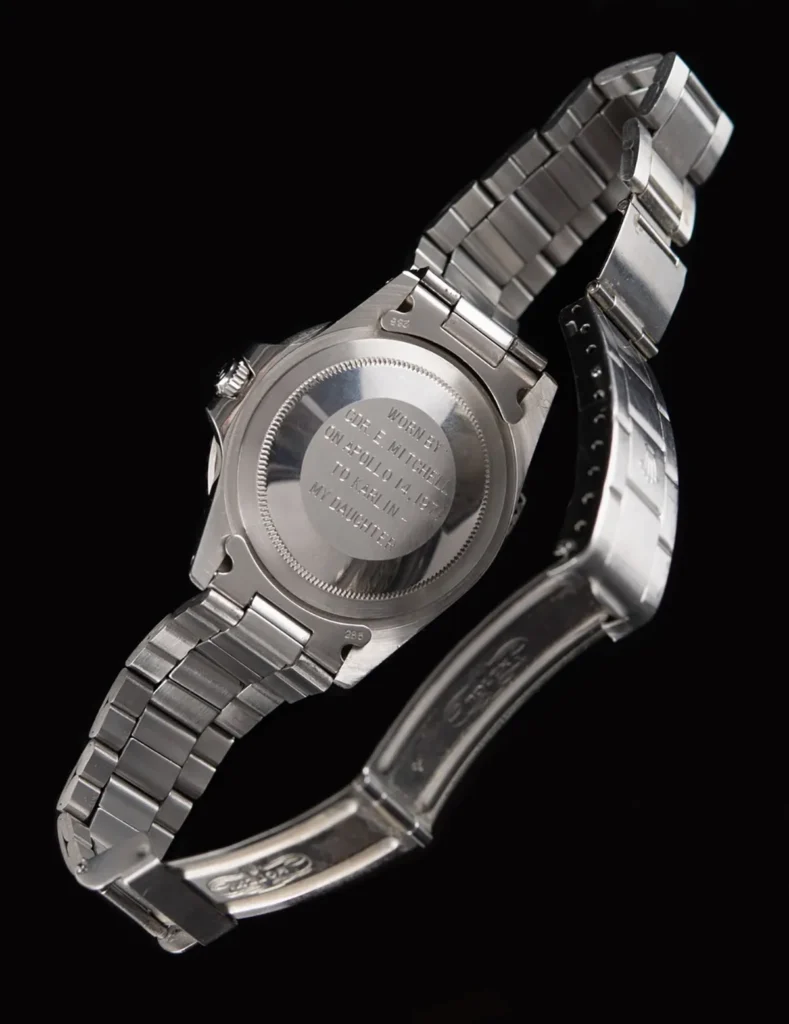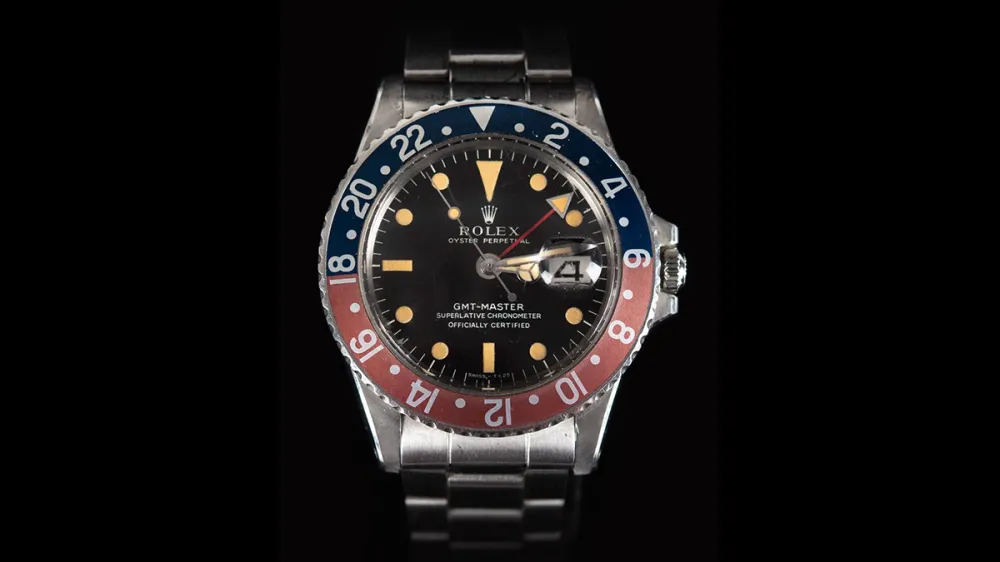Not only is the Rolex GMT-Master a clock, but it is also a representation of history, invention, and precision. This model became highly sought-after among collectors and enthusiasts after being first developed in the 1950s in partnership with Pan American Airways to aid pilots in keeping track of multiple time zones. Its link with space travel, and more specifically the Apollo space missions, is, however, a water-resistant watch that has made a lasting impression. This essay explores the intriguing background of the Rolex GMT-Master, its link to space, and the reasons why these watches are still regarded as symbols of accuracy.
A Timepiece Legacy: The Rolex GMT-Master and Its Origins
As a means for Pan Am pilots to traverse several time zones, the Rolex GMT-Master was unveiled in 1954. Pilots could see both their local time and GMT (Greenwich Mean Time) thanks to its movable bezel and 24-hour hand. Its simplicity and Rolex’s renown for durability ensured its immediate success among professionals.

A number of design upgrades were made to the GMT-Master over the years, and one of those upgrades was the addition of the now-iconic blue and red “Pepsi” bezel, which represents day and night. Its sturdy construction and one-of-a-kind features made it a hit with pilots and anyone else who needed accurate timekeeping in different parts of the world.
Classic Rolex GMT-Master 24-Hour Hand Features: The 24-hour hand, unique to the GMT-Master, let users keep tabs on two time zones simultaneously.
An essential feature for foreign travel, the bidirectional movable bezel allowed customers to easily compute the difference between different time zones.
Longevity: The GMT-Master was able to withstand severe conditions, such as high temperatures and pressures, thanks to Rolex’s utilization of Oystersteel.
Beyond Earth: The Rolex GMT-Master and Outer Space
The GMT-Master ended up in space exploration despite its original intent of serving pilots. The Rolex GMT-Master was the go-to timepiece for the precision and durability required by the Apollo astronauts. Many astronauts favored the Rolex GMT-Master for personal usage due to its dual time zone capabilities and resilience in difficult conditions, even though NASA officially recommended the Omega Speedmaster for its missions.
An Era of Unparalleled Precision and Innovation: The Apollo Missions
The Apollo space missions represented the zenith of human accomplishment, expanding the frontiers of technological capability and geographical understanding. Accurate timekeeping was of the utmost importance throughout space missions due to the gravity of the tasks at hand. The operations couldn’t have been possible without the Rolex GMT-Master, thanks to its precise timing and capacity to monitor more than one time zone.
Because of its unique association with space travel, vintage Rolex GMT-Master models, particularly those worn by astronauts, have become much more valuable. Collectors and enthusiasts highly seek after these watches because to their exquisite craftsmanship, impeccable mechanics, and the fascinating stories that are intertwined with their design.
At Auction: Highly Desired Vintage Rolex GMT-Masters
The value of pre-war Rolex GMT-Masters, particularly those associated with pivotal moments in history, has soared in recent years. Some versions of these rare watches have fetched record prices at auction, which has become the principal venue for selling them.
An iconic Apollo-era Rolex GMT-Master is up for auction as one major event. Considering its association with space travel, this particular model is highly valuable. Due to their historical significance and extreme rarity, these watches fetch premium rates from collectors and enthusiasts.
Why Are Auction Prices So High?
Timepieces associated with significant historical events, such as the Apollo flights, command a premium price due to their resale value.
Iconic historical events and limited edition models add to the rarity and desirability of these items.
Auction prices are higher for models in excellent condition that include all of the original components.
How Condition and Rarity Affect Value
When it comes to antique Rolex GMT-Masters, collectors place a premium on pristine condition. An item’s worth can be greatly affected by its original components, the condition of the dial and movement, and the presence or absence of any relevant historical documents. Collectible timepieces are worth a pretty penny if they still include their original casing, face, and mechanism. Subtle changes or repairs can have a major impact on the value.

An additional important factor is the uniqueness of the model in question. For instance, extremely high prices have been observed for limited edition GMT-Master models that feature distinctive features like a fading “Pepsi” bezel or an unpolished dial. There is no indication that the market for these rare timepieces will slow down anytime soon, given the persistent increase in demand.
The Reasons Why a Vintage Rolex GMT-Master Is Still an Idol for Collectors
The link between the Rolex GMT-Master and space exploration only adds to its attractiveness, making it an iconic piece in the world of horology. The GMT-Master’s mechanical perfection, historical significance, and rarity make it an attractive investment and collector’s item. With auctions setting new benchmarks, it’s evident that demand will be high for antique models, particularly those associated with important events like the Apollo missions.








